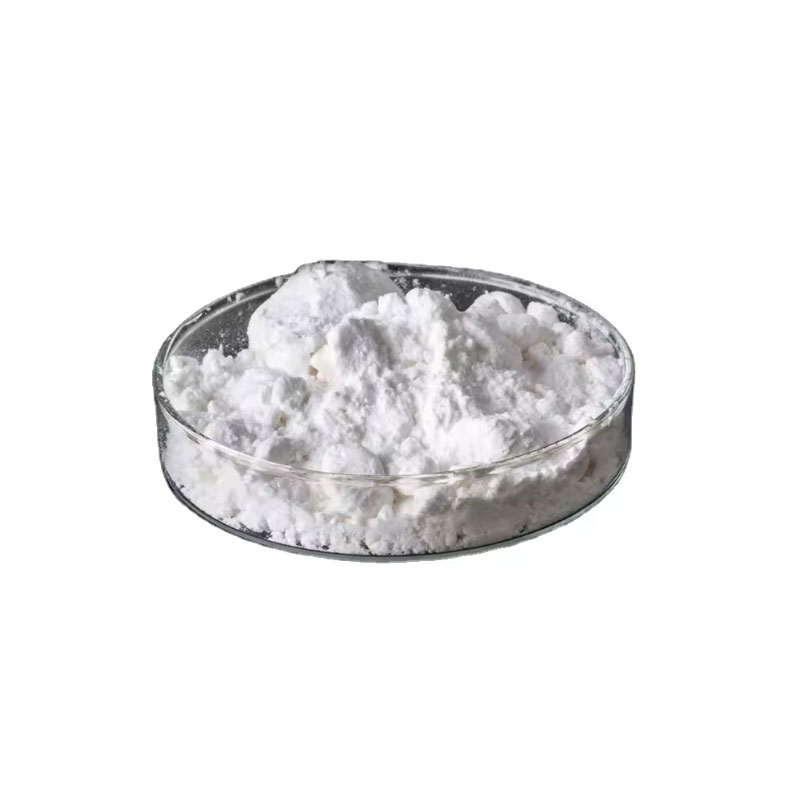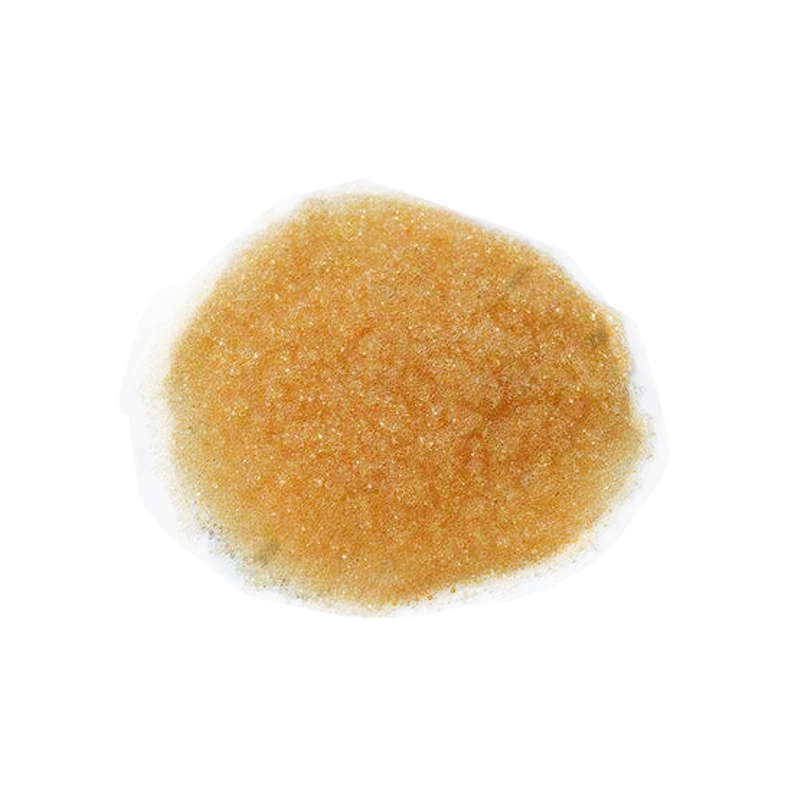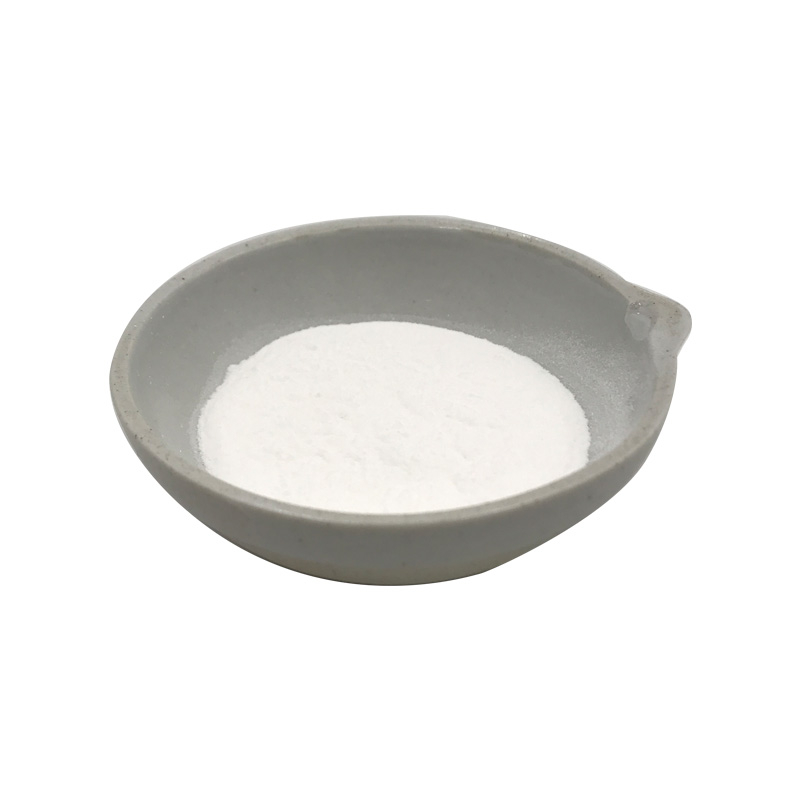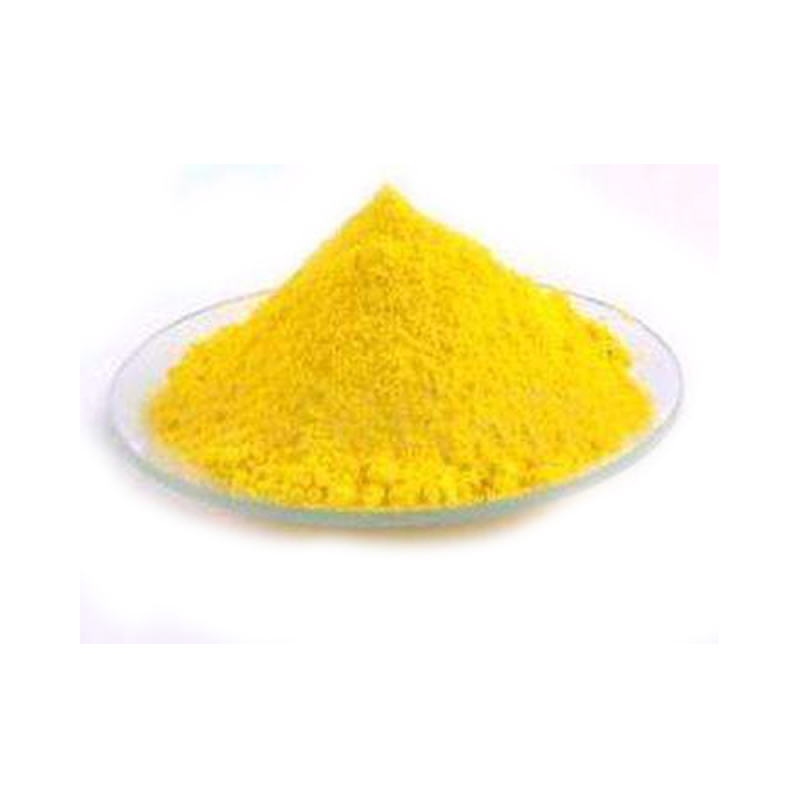Products Description of Mogroside V CAS#88901-36-4 Mogroside V is extracted from a plant called Momordica grosvenori. Momordica grosvenori is a vine plant of the Cucurbitaceae family (Mogrosvenori genus). The mature fruit of Momordica grosvenori is extremely sweet and is rich in cucurbitane-type tetracyclic triterpenoid saponins, among which Mogroside V is the main sweet component, with a dry weight content of up to 1.6%.
Contact Now
Products Description of Pyridine hydrochloride CAS#628-13-7Pyridine, an organic compound, is a six-membered heterocyclic compound containing a nitrogen atom. It can be regarded as a compound in which one (CH) in the benzene molecule is replaced by N, so it is also called nitrogen benzene. It is a colorless or slightly yellow liquid with a foul odor. Pyridine and its homologues exist in bone tar, coal tar, coal gas, shale oil, and petroleum.
Contact Now
Products Description of Guanidinehydrochloride99.5% CAS#50-01-1Guanidine hydrochloride, chemical name is carbamidine hydrochloride, is a white or slightly yellow block, almost insoluble in acetone, benzene and ether. It can be used as an intermediate for medicines, pesticides, dyes and other organic synthesis. It is an important raw material for the manufacture of sulfadiazine, sulfamethylpyrimidine, sulfadimethylpyrimidine and other drugs and folic acid.
Contact Now
Products Description of Dichloromethane CAS#75-09-2Dichloromethane is a compound in which two hydrogen atoms in the methane molecule are replaced by chlorine. The molecular formula is CH2Cl2. It is a colorless, transparent, heavier than water, volatile liquid with an ether-like smell and sweet taste.
Contact Now
Products Description of Tetramethylguanidine CAS#80-70-6Tetramethylguanidine, referred to as TMG, is a strong organic base catalyst with a wide range of uses in industry.
Contact Now
Fumed Silica CAS#112945-52-5Synthetic Amorphous Silica has interesting thickening and thixotropic properties, and an enormous external surface area. It is produced by a vapor phase hydrolysis process using chlorosilanes or substituted silanes such as, silicon tetrachloride in a flame of hydrogen and oxygen. This material is formed and collected in a dry state.
Contact Now
Products Description of Guanidine carbonate CAS#593-85-1Guanidine carbonate is a chemical substance with the chemical formula C2H10N6H2CO3 and its appearance is a white crystalline powder.Guanidine carbonate Chemical PropertiesMelting point >300 °C(lit.)density 1.25vapor pressure 0Pa at 25℃storage temp. Store below +30°C.solubility 450g/lform Crystalline Powderpka12.5[at 20 ℃]color White to almost whitePH11.7 (110g/l, H2O, 20℃)Water Solubility 450 g/L (20 ºC)BRN 3628359InChIKeyKMSRVXJGTIRNNK-UHFFFAOYSA-NLogP-1.63 at 20℃CAS DataBase Refe
Contact Now
Sodium carbonate CAS#497-19-8Overview:Sodium Carbonate, with the chemical formula Na2CO3 and CAS number 497-19-8, is a widely recognized chemical compound known for its diverse applications across various industries.
Contact Now
Products Description of 3-Amino-1-propanesulfonic acid CAS#3687-18-13-Aminopropanesulfonic acid is a promising product candidate for the treatment of AD. It is currently in phase III clinical trials in North America and Europe. Clinical trial results have been published.
Contact Now
Products Description of Neosperidin dihydrochalcone CAS#20702-77-6Neohesperidin dihydrochalcone (NHDC) is a new sweetener that is hydrogenated from neohesperidin extracted from natural citrus plants. It has high sweetness, good taste, long-lasting aftertaste, and low calories.
Contact Now
Petroleum Resins CAS#68131-77-1Petroleum resin is produced by pre-treatment, polymerization, distillation and other processes of C5 and C9 fractions produced as by-products of petroleum cracking.
Contact Now
Products Description of Dibutylamine CAS#111-92-2Pure di-n-butylamine is a colorless liquid, m.p.-60℃ (-61.9℃), b.p.159℃ (48℃/1.73kPa), n20D1.4177, relative density 0.767 (20℃), f.p.41℃, soluble in water, acetone and benzene, and easily soluble in ethanol and ether.Dibutylamine Chemical PropertiesMelting point −62 °C(lit.)Boiling point 159 °C(lit.)density 0.767 g/mL at 25 °C(lit.)vapor density 4.46 (vs air)vapor pressure 1.9 mm Hg ( 20 °C)refractive index n20/D 1.417(lit.)Fp 106 °Fstorage temp. Store below +30°C.so
Contact Now
Products Description of 3-Methoxythiophene CAS#17573-92-13-Methoxythiophene is an important intermediate in organic synthesis.3-Methoxythiophene Chemical PropertiesMelting point 49-50 °C(Solv: ethyl ether (60-29-7); ligroine (8032-32-4))Boiling point 80-82 °C/65 mmHg (lit.)density 1.143 g/mL at 25 °C (lit.)refractive index n20/D 1.532(lit.)Fp 121 °Fstorage temp. Keep in dark place,Inert atmosphere,2-8°Cform Liquidcolor Clear light brownSensitive Air SensitiveBRN 106404LogP1.810 (est)CAS DataBase Reference17573-92-1(CAS DataB
Contact Now
Products Description of 2-Aminothiazole-4-acetic acid CAS#29676-71-9 It is prepared by condensing ethyl chloro or bromoacetyl acetate with thiourea and then hydrolyzing it.2-Aminothiazole-4-acetic acid Chemical PropertiesMelting point 130 °C (dec.)(lit.)Boiling point 399.0±17.0 °C(Predicted)density 1.367 (estimate)vapor pressure 1.03-1.15hPa at 20℃refractive index 1.6430 (estimate)storage temp. -20°Csolubility DMSO (Slightly)pka3.20±0.10(Predicted)form solidcolor WhiteWater Solubility 6.5 g/L (20 ºC)BRN 127415Stability:Unsta
Contact Now
Products Description of Diacetoneacrylamide CAS#2873-97-4Diacetone acrylamide has two reactive groups: N-substituted amide and ketone. It is very easy to copolymerize with other ethylene and monomers, thereby introducing ketocarbonyl groups into polymers. By utilizing the chemical properties of ketocarbonyl groups, polymers can undergo crosslinking and grafting reactions, and are used to prepare various adhesives, thickeners, paper reinforcing agents, crosslinking agents, etc.
Contact Now
Products Description of Ethylene dimethacrylate CAS#97-90-5Ethylene glycol dimethacrylate is a diester, meaning there are two alcohol/acid combinations in one organic compound or monomer. Industries often combine this substance with other chemicals to make plastics or rubber.
Contact Now
POLY(DIMETHYLAMINE-CO-EPICHLOROHYDRIN) Chemical Propertiesdensity 1.1 g/mL at 25 °Crefractive index n20/D 1.427CAS DataBase Reference25988-97-0EPA Substance Registry SystemMethanamine, N-methyl-, polymer with (chloromethyl)oxirane (25988-97-0)Safety InformationHazard Codes XiRisk Statements 38-41Safety Statements 23-26-36/37/39WGK Germany 3Factory and Equipment ShowFast delivery timeInventory 2-3 working days New production 7-10 working days
Contact Now
Products Description of Chlorobutanol CAS#57-15-8Colorless crystals. There are two types of crystals: containing half molecular crystal water and anhydrous. The melting point of the containing half molecular crystal water type is 78℃, slightly soluble in water (1:250), easily soluble in ethanol (1:1), glycerol (1:10), ether, chloroform and volatile oil. The melting point of the anhydrous type is 97℃, the boiling point is 167℃, and the 135℃ (32.7kPa).
Contact Now
Diethylene glycol CAS#111-46-6Diethylene glycol is a clear colorless, odorless and steady oily liquid. It is additionally barely viscous, noncorrosive and nonvolatile. Because of its ether and alcohol group, diethylene glycol well-knownshows chemical residences attribute of both essential alcohols and ethers. Its boiling factor is extensively greater than that of ethylene glycol, and its solvent is greater.
Contact Now
Products Description of Diethylene Glycol Ethyl Methyl Ether CAS#1002-67-1Diethylene glycol methyl ethyl ether is a chemical.
Contact Now
Products Description of Triallylamine CAS#102-70-5Triallylamine is an organic compound with the chemical formula C9H15N. It is mainly used as an extraction agent for uranium and rare metals. It can also be used to treat organic wastewater and produce petroleum products and quaternary ammonium compounds and their derivatives as additives and metal resists.
Contact Now
Products Description of Bis(2-ethylhexyl) maleate CAS#142-16-5Diethylhexyl maleate, also known as diisooctyl maleate, is a chemical with the molecular formula C20H36O4.Bis(2-ethylhexyl) maleate Chemical PropertiesMelting point -50°CBoiling point 208-209°C 10mmdensity 0.944 g/mL at 25 °C(lit.)vapor pressure 0Pa at 20℃refractive index n20/D 1.455(lit.)Fp >230 °Fstorage temp. Sealed in dry,Room Temperaturesolubility Chloroform (Sparingly), Ethyl Acetate(Slightly),Methanol (Slightly)form Liquidcolor ColourlessWater
Contact Now
Products Description of SuccinonitrileCAS#110-61-2White waxy crystals. Melting point 54-56℃, boiling point 265-267℃, 185℃ (8.0kPa), 158-160℃ (2.67kPa), relative density (60/4℃) 0.985, refractive index (nD60) 1.41734 (liquid), flash point 110℃. Soluble in acetone, chloroform, dioxane, slightly soluble in water, ethanol, ether, carbon disulfide and benzene.
Contact Now
Products Description of 5-Methoxy-2-Tetralone CAS#32940-15-15-Methoxy-2-tetralinone is a chemical intermediate with a molecular formula of C11H12O2 and a molecular weight of 176.21.5-Methoxy-2-tetralone Chemical PropertiesMelting point 32-36 °C (lit.)Boiling point 165°C/10mmHg(lit.)density 1.124±0.06 g/cm3(Predicted)vapor pressure 0.059Pa at 25℃Fp >230 °Fstorage temp. Keep in dark place,Sealed in dry,Room Temperaturesolubility Chloroform, Dichloromethane, Ethyl Acetate, Methanolform Solidcolor Yellowish OrangeBRN 1451623InChIKeyMDA
Contact Now


































